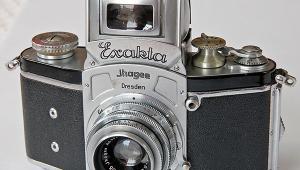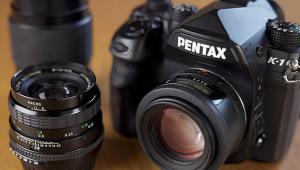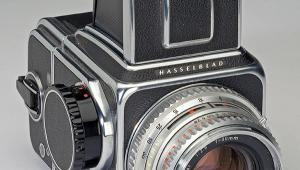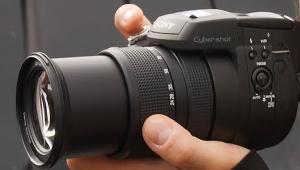Refurbished Photo Gear; Bargain Or Bust?
 Sooner or later, you're going to be tempted to buy a product that's labeled "refurbished." It will probably be the lower price that attracts you--after all, there is one and only one reason to even consider "refurb" and that is to save money. Depending on where you shop, you may be led to believe that the refurbished item is as good as new. It may be. Then again, it may not be.
Sooner or later, you're going to be tempted to buy a product that's labeled "refurbished." It will probably be the lower price that attracts you--after all, there is one and only one reason to even consider "refurb" and that is to save money. Depending on where you shop, you may be led to believe that the refurbished item is as good as new. It may be. Then again, it may not be.
Refurbished products are usually items that were returned by consumers shortly after being purchased. The number one reason for return is what can be kindly referred to as "consumer confusion." They couldn't make it do what they thought it should. Never mind the Owners Manual. When product performance fails to match expectations, the result is often a refund. Another reason is "buyer's remorse." We've all gone through this at one level or another. It seemed like a good idea at the time--what was I thinking? Alas, most retailers offer return policies that are so liberal that they invite transgression. Least common reason: the product was defective.
Retailers, the big ones anyway, transfer as many expenses as possible to the manufacturers. So naturally they ship the consumer's returns back to their maker. Sadly, we all pay the price for that. By law, manufacturers cannot sell a returned item as new. The law stipulates that in order for something to be called "new" it must meet certain requirements--and, in the most strict interpretation of the word--the product must never have been sold to an end user. Therein lies the rub. Manufacturers must meet an additional expense to restore the item to salable condition and dispose of it through whatever channels they have available--at a grossly reduced price.
I'm often asked if I would buy a refurbished product. My answer is "I do!" My experience in the photo industry has taught me that a refurbished product is, essentially, a new product that has already had the bugs removed--provided that it was refurbished by the manufacturer and not an independent third party. Now, let me qualify this. If the price for the item in new condition is $500 or less, I buy new. The savings that can be attained by going the refurb route (generally 20 percent or less) does not justify the risk that I may have to deal with a problem. If the asking price is over 5 big ones, I'll consider a refurbished alternative. One exception is lenses. Lenses are almost never defective--there's nothing to break--so I'll buy refurb every time.
If you need more reassurance, keep this in mind. Manufacturers are not willing to place the reputation of their brand in jeopardy by selling defective products--including refurbished ones. That's why I'm always careful to make sure that the product was refurbished by the manufacturer. They have a lot to lose if the product turns out to be a lemon.
Here's how to protect yourself: First, ask if the item has a money-back guarantee. Often the answer is, yes. How long is the warranty? Thirty days is long enough--defects tend to show up right away.
Make sure that you're getting all of the original accessories and--especially--the original documentation. Short of that, confirm that a pdf of the Owners Manual and applicable software can be downloaded from the manufacturer's website.
If you have a chance to inspect the item before purchase, be sure to check for signs of impact damage or exposure to moisture--those are the two most prevalent user-inflicted maladies. Look for scratches, tiny cracks, excessive wear marks, and marred screw heads.
Last bit of advice: reliable retailers sell reliable products. Use your common sense when deciding whether or not to take a chance by buying a product that someone else has already owned. If you've dealt with the retailer in the past and had a good experience, odds are you'll be safe. If you've never heard of them before, and are blinded by the super low price, Heaven help you.
In particular, if the seller is not up-front about the fact that the item has been factory serviced (sometimes, especially on auction websites, one must drill down and read the fine print in the warranty statement to learn that the item has been refurbished) assume that they have something to hide. As with all things, there are different grades of refurbished, ranging from essentially unused to severely abused.
New or refurb? One month later, they'll look the same, regardless which you buy. If the savings justifies the risk, buy the factory refurbished model. It's the best way to stretch your budget.

















































